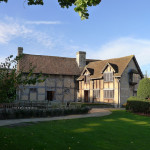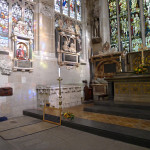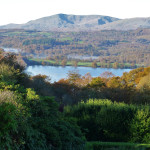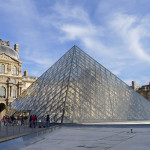Trip to United Kingdom and Paris, October 24—30, 2017
In the travelling plan:
- William Shakespeare’s sites in Stratford upon Avon.
Stratford -upon-Avon is a town in the county of Warwickshire in England, situated on the River Avon.
Stratford was founded in 1196 by the bishop of Worcester on the lands in his ownership. The name originated form old English strǣt (street) and ford. In the same year, English king Richard I Lion Heart granted it a charter, which allowed to hold weekly markets in the town. Later, Stratford developed as a market town. In the 15th century, a rich merchant Hugh Clopton, who was born in Stratford’s neighbourhood, and who became a Lord Mayor of London, conducted large-scale works to upgrade the town: replaced the wooden bridge over Avon with a masonry one, which is still standing there, paved the streets, rebuilt the local church, created the system of facilities for the social care.
Stratford-upon-Avon is famous because of William Shakespeare (1564-1616), the greatest English author and one of the best playwrights of the world, who was born and grew up here. At the age of 18, Shakespeare married Anne Hathaway, and had three children with her: daughter Susanna, and twins Hamnet and Judith. Shakespeare’s career began between 1585 and 1592, when he moved to London. Soon he became a successful actor, playwright, and co-owner of a playing company called Lord Chamberlain’s Men, which later was known as the King’s Men. In 1613, at the age of 48, he returned to Stratford, where he died three years later. There is scarce historical record concerning Shakespeare’s life, and some theories about his life are made based upon the official documents and contemporaries’ testimonies; that is why in the researchers’ community until now there are still discussions concerning his appearance and religious views; also there is a theory, according to which, the works attributed to him, were actually written by someone else.
- City of Liverpool — the flagship of industrial revolution in England and the home of the Beatles.
Liverpool is a city and port on the north-western coast of England, in the estuary of the Mersey River. The first mention of the settlement goes back to 1190. Liverpool means “muddy water,” although some scholars give elverpool (pool with eels) as the original toponym. As of 2016, the population of the city was over half a million people.
In 1207, king John Lackland issued a letters patent, according to which, Liverpool received the status of a borough. In view of the castle of Liverpool, English troops were sent to Ireland.
In the middle of the 16th century, Liverpool remained quite an insignificant town with five hundred people living in it. In the 17th century, there was a slow progress in trade, and its population grew. During the civil war in 1644, the city was under a siege for eighteen days.
The significance of Liverpool as a port on the west coast began to increase in the 18th century, with the growth of the Trans-Atlantic slave trade and economic development of the American colonies.
During the 19th century, Liverpool was a flagship of the industrial revolution, In the 1840s, the population increased rapidly, especially, when the Irish settlers arrived. By 1851, approximately 25% of the city’s residents were of Irish origin. At the end of the 19th—beginning of the 20th centuries, Liverpool received many immigrants from different countries of Europe. This became manifested in the variety of religious buildings that are found throughout the city, many of which are still used today. The local people speak the Scouse dialect.
In the 1960s, Liverpool became one of the most popular centres of young people’s culture. The most famous cultural phenomenon, originating from here, was The Beatles band.
-
- Warwick Castle.
Warwick Castle is a medieval castle, located in the Warwick town (Warwickshire county in central England), on the River Avon. King William I the Conqueror built this castle in 1608 on the site of, or near the Anglo-Saxon fortress in Warwick. The castle was used as a fortification until the early 17th century, when Sir Fulke Greville, 1st Baron Brooke, made it into his country manor. It remained in the ownership of the Greville family, which received the title of the Earls of Warwick.
- recreation in the Lake District.
The Lake District (Lakeland) is a nature reserve in North-West England, founded in 1951. The Lakeland is situated between the borders of Scotland, Northumberland, Durham, North Yorkshire, and Lancashire. In the Victorian epoch, the district became very popular as a recreation zone.
On the territory of the Lake District National Park, with the area of about 1440 square kilometres, there are sixteen natural lakes, and several water reserves, one hundred and eighty hills (fells) 600 to 900 metres high and above. The highest mountain in England — Scafell Pike, 978 metres high, is located within the territory of the National Park.
- to see Paris and …. «die». One-day trip to Paris.
High speed trains travel from London to Paris under the English Channel. It is only a few hours — and you find yourself in Paris. What can you see in Paris in one day? Nothing, of course! But if you wear comfortable shoes, you can have a quick look at the most important sites in Paris: the Eifel Tower, Notre-Dame de Paris, and several masterpieces that are displayed in Louvre. In Louvre we plan to meet the most adored women of the world — Mona Lisa and Venus of Milo.
After the trip, articles and photographs will be posted.





